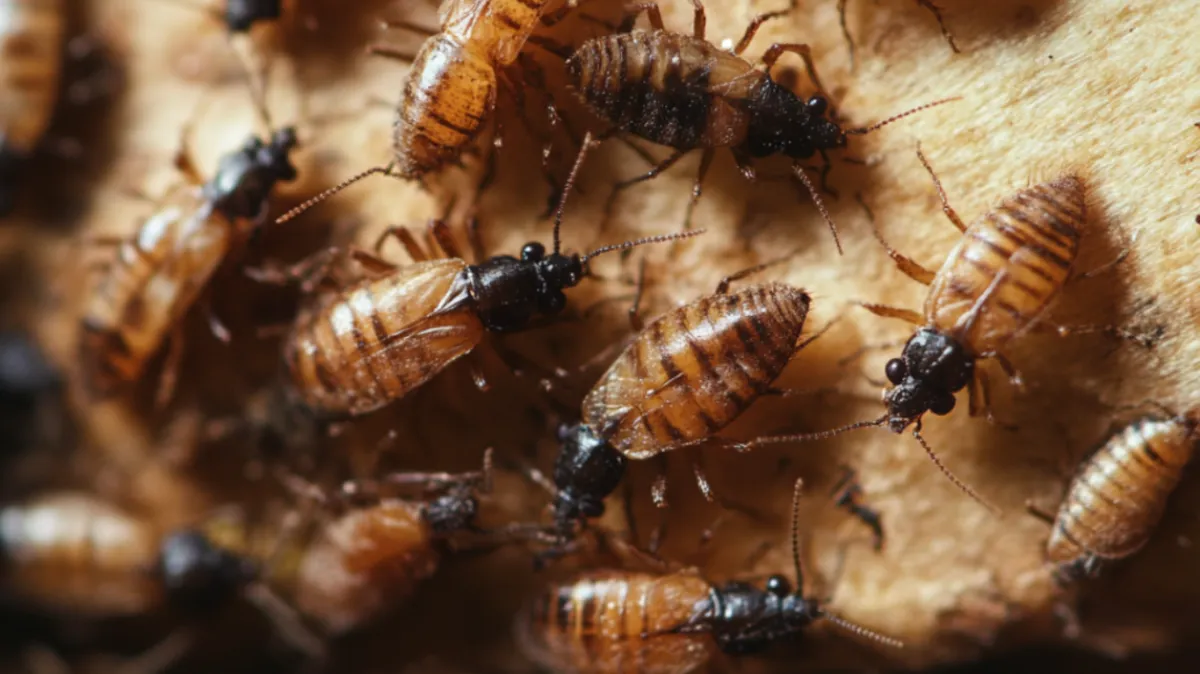Designed to Educate, Motivate & Inspire
The Guardian Journal
Welcome to the Guardian Pest & Termite journal section, your go-to resource for expert insights and tips on pest control solutions. Whether you're dealing with stubborn termites, bothersome rodents, or persistent bed bugs, our journal offers practical advice, preventive measures, and the latest industry updates. Stay informed with our comprehensive guides and learn how to protect your home or business effectively. To learn more contact us, we are here to help you maintain a pest-free environment year-round.

Loving Your Home, Not the Pests: Pre-Spring Pest Check in the Carolinas
Early Detection for Effective Control
Early pest detection is a cornerstone of effective pest management. Identifying potential harborage sites before pests become active in spring can significantly reduce the risk of large-scale infestations. Common areas to check include:
Attics and Basements: These less-frequented areas of your home provide perfect winter refuge for pests like spiders, mice, and even bats. Look for droppings, nesting materials, and structural gaps that could serve as entry points.
Cabinets and Pantries: Crumbs and improperly stored food attract pests even during the colder months. Ensure all food items are stored in sealed containers and that shelves are free of food debris.
Garages and Storage Areas: Often overlooked, these areas can accumulate clutter and debris that provide ideal nesting sites. Regularly organizing and cleaning these spaces can prevent pest harborage.
Structural Safeguarding: Your First Line of Defense Against Pests
Here’s how you can fortify your home against unwanted invaders with effective structural safeguards:
Comprehensive Exterior Inspection and Sealing
Thorough Inspections: Begin with a meticulous inspection of your home’s exterior. Look for any cracks, holes, or other openings that might be inviting to pests. Common problem areas include where utility lines enter the house, cracks in the foundation, gaps around window frames and doors, and where the siding meets the roofing.
Sealing Cracks and Openings: After identifying potential entry points, seal these vulnerabilities with durable materials. For smaller gaps, silicone caulk is effective, providing a flexible seal that moves with your home to prevent future breaches. Larger openings can be filled with expanding foam, which forms a pest-proof barrier as it hardens. Ensure that vents are covered with wire mesh to keep out rodents and insects while maintaining airflow.
Enhanced Weather Stripping and Door Sweeps
Weather Stripping: Weather stripping is a simple yet crucial line of defense against pests. It involves installing strips of material around windows and doors to close the gap between the frame and the moving parts. This not only keeps pests out but also improves energy efficiency by reducing drafts.
Door Sweeps: Similarly, door sweeps can be attached to the bottom of exterior doors to block the gap between the door and the threshold. This prevents not just pests but also water and cold air from entering, enhancing your home’s comfort and energy efficiency.
Drainage System Maintenance
Gutter Cleaning: Gutters and downspouts should be kept clear of leaves, twigs, and other debris that can lead to clogs and water overflow. Standing water in clogged gutters can attract mosquitoes, while water damage from overflow can create new entry points for pests.
Proper Drainage: Ensure that your home’s drainage system directs water away from the foundation. This helps prevent structural damage and discourages pests that thrive in moist environments, such as termites and carpenter ants, from settling near your home.
Foundation and Basement Checks
Foundation Checks: Regularly inspect your home's foundation for signs of deterioration such as cracks or crumbling. These can become major entry points for pests, especially subterranean species like termites.
Basement Assessments: Basements, particularly unfinished ones, can harbor damp conditions that attract pests. Use dehumidifiers to maintain dry conditions and inspect basement windows and exterior walls regularly for signs of ingress.
Yard and Perimeter Defense: Landscaping for Pest Prevention
Guardian Pest & Termite recommends several effective landscaping practices to help keep pests at bay:
Strategic Vegetation Management
Trim Vegetation Regularly: It’s important to keep bushes, shrubs, and tree branches well-trimmed and away from your home’s structure. Vegetation that touches your home can act as a highway for pests, providing easy access to your living spaces. Ensure that there’s at least a foot of space between your home’s walls and any foliage to disrupt this pest pathway.
Choose Pest-Repellent Plants: Incorporating certain plants that are known to naturally repel pests can be an effective way to enhance your yard’s defenses. Plants like lavender, marigolds, and citronella are not only beautiful but also serve to deter a variety of insects. Planting these around the perimeter of your yard or near entry points can add an extra layer of protection.
Yard Cleanliness and Debris Management
Remove Yard Debris: Piles of leaf litter, stacks of firewood, and other types of yard debris can become perfect hiding spots for pests. Regularly cleaning your yard to remove these potential shelters is crucial. Store firewood at least 20 feet away from your home and off the ground to minimize the risk of wood-boring pests close to your home.
Drainage Solutions: Standing water can attract mosquitoes and other water-loving pests. Ensure that your yard has proper drainage to prevent water accumulation. Consider installing French drains or adjusting the slope of your yard to guide water away from your home effectively.
Mulching and Ground Cover Management
Proper Mulching: While mulch can beautify your landscape and help retain soil moisture, it is also attractive to pests like termites and ants if misused. To prevent pest attractions, keep mulch at least 6 inches away from the foundations. Opt for inorganic mulches like rock or rubber in areas closest to your home, as these are less appealing to pests.
Ground Cover Choices: Dense ivy or other ground covers can harbor pests right against your home’s foundation. Consider reducing or removing these covers near your home, or replacing them with less dense options that do not provide as much shelter for pests.
Creating Deterrent Barriers
Natural Barriers: Creating natural barriers with gravel or stone can help deter pests. These materials do not hold moisture and are less attractive to pests as nesting sites. Creating a barrier about a foot wide around the perimeter of your home can act as an effective deterrent.
Use of Border Fencing: Small border fences can also help reduce pest entry from the yard into the garden or home. Ensure these are maintained and free of gaps.
Why Wait? Start Your Pre-Spring Prep Today!
Ignoring the potential for winter pests can lead to unwelcome surprises come spring. By taking proactive steps now, you can enjoy the warmer months ahead without the hassle of uninvited pest guests. Contact Guardian Pest & Termite today to schedule your pre-spring pest check and learn more about our comprehensive pest control solutions. Embrace the new year with a resolution to maintain a pest-free home—it's a commitment that Guardian Pest & Termite is ready to help you keep.
Indian Land, SC Pest Control Journal
Copyright 2024. All Right Reserved.

